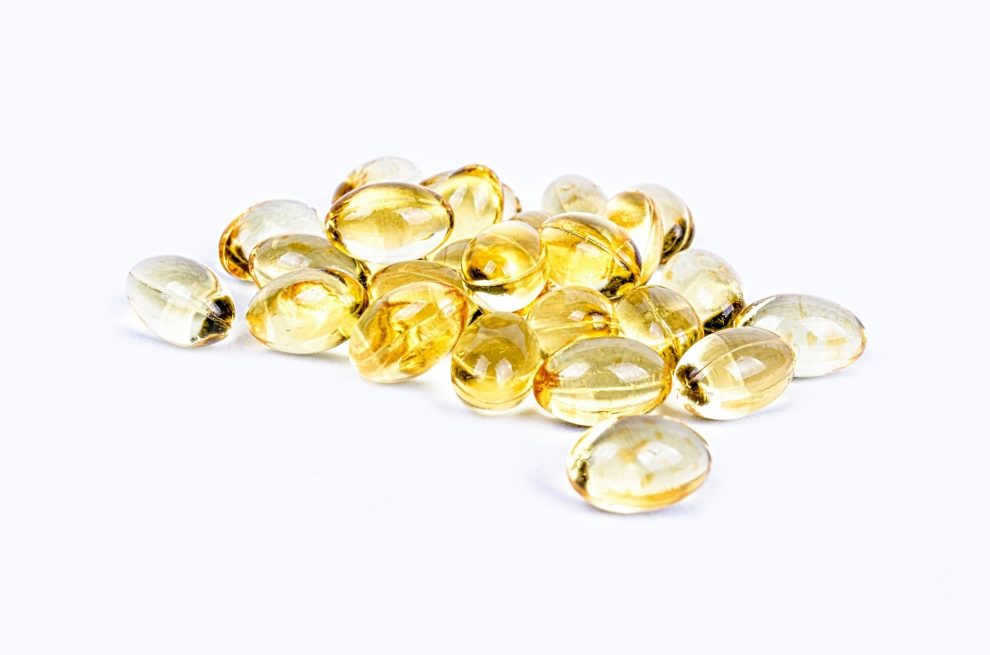Share on Pinterest A new draft recommendation from the U.S. Task Force says taking vitamin D supplements with or without calcium does not prevent falls or fractures in older adults. kali9/Getty ImagesMembers of the U.S. Preventive Services Task Force say vitamin D supplements do not reduce the risk of falls or bone fractures in healthy older adults.They note the vitamin can be helpful for older adults with certain medical conditions like osteoporosis.There are some foods that provide a minimal amount of vitamin D, but the most effective way to obtain the nutrient is through sun exposure.
Vitamin D has many health benefits, but it doesnt reduce the risk of falling and it doesnt prevent bone fractures in older adults.
Thats the conclusion of a preliminary recommendation that members of the United States Preventive Services Task Force (USPSTF) released this week.
In their draft recommendation, USPSTF members said taking vitamin D supplements with or without calcium does not prevent falls or fractures in women who have gone through menopause or men 60 years and older.
Their recommendation applies to people who live at home. It does not apply to people in assisted living or nursing homes. Nor does it apply to people who take vitamin D or calcium supplements for medical reasons or people who have been diagnosed with osteoporosis.
Preventing older adults from falling and breaking a bone is important to their ongoing health and independence, said John Ruiz, Ph.D., a Task Force member and a professor of clinical psychology at the University of Arizona, in a press release.
Unfortunately, when we reviewed the latest evidence, we found that taking vitamin D with or without calcium does not prevent falls or fractures in older adults, so we recommend against these supplements for people who are not taking them for other medical reasons.
The Task Force is accepting public comments on the draft report until January 21. The new recommendation is an update from a 2018 report that recommended daily vitamin D supplement for women. Rethinking vitamin D for fracture risk
Experts not affiliated with the report say there is important information to glean from the Task Forces new draft recommendation.
We know that vitamin D deficiency and low calcium diet increases the risk of bone fragility and fractures, said Edward Hsiao, MD, a professor at the University of California San Francisco as well as the director of the UCSF Metabolic Bone Clinic and the UCSF Endocrine T32 Program.
We also know that vitamin D supplementation and calcium supplementation, in the setting of bone fragility or vitamin D deficiency, are important for maintaining and improving bone health, Hsiao told Healthline. This is even more important if the patient is on treatment for osteoporosis, since these are key substrates for building back bone and so those medications wont work well in the absence of these supplements.
These guidelines are in line with the recently published guidelines from the Endocrine Society of which I was a part, added Daniel Bikle, MD, a professor of medicine and dermatology at UCSF.
Basically, they are for healthy individuals. We are not talking about those with suspected vitamin D deficiency such as those with nutritional deficiencies, osteoporosis, [or] malabsorption, he told Healthline. What are the benefits and side effects of vitamin D?
The Task Force members pointed out there are a number of reasons for obtaining a sufficient amount of vitamin D.
Vitamin D is a fat-soluble vitamin that promotes calcium absorption, a process that can help keep bones and muscles strong. It also can play a role in supporting the immune system.
In past studies, researchers have said that low vitamin D levels can contribute to joint pain. Other research has indicated that low vitamin D levels can be a cause of chronic inflammation.
In addition, some research has reported that vitamin D can help reduce the risk of heart disease as well as reduce the risk of severe illnesses such as the flu and COVID-19.
However, excessive amounts of vitamin D can cause stomach discomfort or kidney problems.
There are a multitude of effects of vitamin D on the body, said Wendolyn Gozansky, MD, a geriatrician and vice president and chief quality officer at Kaiser Permanente.
I tell my patients to think about vitamin D as a hormone, she told Healthline. It has impacts on muscle, bone, and immune cells and gets metabolized by the liver and kidney. A main function of vitamin D is calcium absorption so, it helps keep your heart, muscles, and bones functioning normally. While taking vitamin D supplements may not prevent falls and fractures, having the right amount of vitamin D in your body supports overall health.
Despite these benefits, Gozansky offered a word of caution. Because vitamin D is a fat-soluble vitamin, it can build up in the body over time if you are taking in too much vitamin D, she explained.
Toxic levels of vitamin D can result in high blood calcium levels that may result in nausea, vomiting, constipation, muscle weakness, confusion, kidney stones, and more. Always talk to your doctor about any over-the-counter supplements that you are taking. Just because something is available over the counter doesnt mean its automatically safe for you as an individual.
David Cutler, MD, a family medicine physician at Providence Saint Johns Health Center in California, notes that many studies on this topic center on people who have normal vitamin D levels.
The appropriate conclusion is not that patients do not need any vitamin D but more correctly that patients with adequate amounts of vitamin D will not reduce their fracture risk by additional supplementation, he told Healthline.
Cutler also noted the Task Force recommendation would mean that insurance companies may not pay for vitamin D supplement treatment. How to get more vitamin D
Its recommended that adults get between 600 and 800 international units of vitamin D per day, depending on their age.
Its estimated that more than 40% of adults in the U.S. have a vitamin D deficiency.
There arent a lot of foods that are overloaded with vitamin D.
Nonetheless, there are some foods that can naturally provide your body with some levels of vitamin D. Among them:fatty fish (i.e., salmon, halibut, mackerel)canned tunacod liver oilegg yolksmushrooms
Some foods, such as milk and orange juice, are fortified with vitamin D.
However, the main source of vitamin D is sunshine. The vitamin is produced from cholesterol in the skin.
Too much exposure to sunlight, however, can raise the risk of skin cancer. The Centers for Disease Control and Prevention (CDC) recommend that you limit your exposure to the sun, wear a hat, sunglasses, and long-sleeved clothing while in the sun, and apply a broad-spectrum sunscreen to your skin while outdoors.
Cutler noted that all the information about vitamin D can seem confusing.
Some experts suggested that vitamin D could be obtained safely from sun exposure, a recommendation that was considered controversial because of a potentially increased risk of skin cancer, he told Healthline.
Other experts suggested that perhaps being outdoors with sun exposure caused improved health outcomes independent of increased vitamin D. Needless to say, this nuanced balancing of benefits and risks is difficult for experts, let alone the average person, to reconcile.
Addressing the issue of vitamin D supplementation with your physician requires looking at all the potential benefits and risks in the context of your personal health situation, he added.
This includes addressing diet for adequate calcium intake, exercise for fall prevention, and genetic factors which may affect risk of kidney stones. So, it is only by comprehensively evaluating your entire health status that an appropriate recommendation for vitamin D supplementation can be made, Cutler explained. How to avoid falls and fractures
The Centers for Disease Control and Prevention (CDC) reports that more than 1 in 4 older adults in the U.S. falls each year.
The agency notes tat falling once doubles the chances of falling again. Yet, less than half of older adults who fall report the incident to their doctor.
The agency adds that one in 10 falls causes an injury to an older adult. Each year, there are 3 million emergency visits as well as 1 million hospitalizations in the U.S. due to falls from older adults. Falls are also a common factor in hip fractures and traumatic brain injuries in older adults.
Injuries from falls can limit an older persons ability to perform daily activities and live independently.
The CDC recommends regular physical activity for older adults to lessen their chances of falling. These activities include:At least 150 minutes of moderate-intensity aerobic activity per week.Muscle strengthening activities, including weight lifting and resistance training, at least 2 days per week.Activities to improve balance such as standing on one foot.
Experts also recommend older adults get screened for osteoporosis as well as have their vision and hearing tested.
They also urge older adults to stand up slowly after sitting down to avoid a light-headed incident that could cause a fall.
As a geriatrician, I tell my patients that the best exercise to prevent falls and fractures is the one that you enjoy doing regularly, said Gozansky. This can mean weight-bearing exercise like walking or weightlifting as well as balance exercises such as yoga or tai chi. Takeaway
Members of the U.S. Preventive Services Task Force have released a preliminary report in which they say vitamin D supplements do not reduce the risk of falls or bone fractures in healthy older adults.
They note that supplementation may still be beneficial for older adults with certain medical conditions such as osteoporosis.
Experts note that sunshine is the best way to obtain vitamin D, although overexposure to the sun can raise a persons risk of skin cancer.
They say older adults should exercise regularly to strengthen bones and muscle to help reduce their chances of falling or suffering a bone fracture.





